Ever tapped on an Amazon link from your phone, only to land on a sluggish browser instead of the app?
That’s exactly why Amazon mobile deep linking exists.
These special links ensure users open the Amazon app directly, creating a smoother shopping path.
For marketers, affiliates, and influencers, deep links mean fewer steps, less friction, and more sales.
With platforms like Linko, you don’t need coding skills to generate these app-first links.
Let’s walk through how they work, why they matter, and how you can start using them today.
Key Takeaways
Amazon mobile deep linking allows product and category links to open directly inside the Amazon app instead of the browser. This matters because it creates a smoother shopping journey, reduces friction, and increases the chances of conversions.
Deep links improve engagement by taking users straight to the product page inside the app. Marketers see higher click-to-purchase rates since customers skip unnecessary steps like logging in or navigating from the homepage.
Yes, they work in social media ads, email, SMS, and even QR codes for offline promotions. This flexibility helps marketers and affiliates run consistent campaigns across both online and offline touchpoints.
Sometimes links fail to open in the app due to outdated formats or missing fallback URLs. Testing links and using tools like Linko ensures proper redirects to the app or to the right app store if the app is not installed.
Affiliates and influencers can use deep links to drive sales while tracking clicks and conversions more accurately. With tools like Linko, they can shorten links, monitor performance, and build stronger revenue-driven campaigns.
What is Amazon mobile deep linking and why does it matter?
Amazon mobile deep linking is a linking method that opens products or categories inside the Amazon app rather than a mobile browser.
It matters because users stay logged in, shop faster, and check out more often.
Key reasons it matters:
- Speed: The app loads faster than mobile sites.
- Trust: Customers feel safer buying inside the app.
- Sales: Deep links have been shown to boost conversions.
As Branch Metrics noted in a 2023 report:
“Users who land inside an app after clicking a deep link are twice as likely to engage compared to those who land on a mobile site.”
That’s not just theory, it’s a real advantage for anyone driving traffic to Amazon.
How does an Amazon deep link work inside the app?
An Amazon deep link uses a hidden URI scheme that tells your phone, “Open this link in the Amazon app if it’s installed.”
If the app is missing, the link redirects to either the browser or the App Store/Google Play.
Think of it as a shortcut: instead of asking the user to find the app, log in, and search for the product, the link drops them directly at the destination.
What happens when users open an Amazon product link on mobile?
If you share a regular Amazon URL, it usually opens in a browser. That means:
- Users may have to log in again.
- Checkout can feel slower.
- Cart sync may not work properly.
If you share a deep link, the exact product page opens inside the Amazon app.
Customers can:
- Stay logged in automatically.
- Add items to cart with one tap.
- Use features like “Buy Now” instantly.
That single change “app vs browser” often decides if a shopper completes their order or abandons it.
Why do marketers prefer deep links over regular Amazon URLs?
Marketers prefer deep links because they remove friction.
A standard Amazon link is “just a web link.”
A deep link ensures the app experience, which is faster, cleaner, and more trustworthy.
For example:
- An influencer posting an Amazon product on Instagram can use a deep link to ensure the app opens directly.
- An affiliate running ads sees higher click-to-purchase rates because deep links skip unnecessary steps.
As Neil Patel often says:
“Every extra step is a chance for the customer to drop off.”
Deep links cut those steps out.
Which types of Amazon URLs can be turned into deep links?
Most Amazon URLs can be turned into deep links, but the two main types are:
- Product links – single items like a phone case or book.
- Category/storefront links – entire sections or brand storefronts.
Both work well inside the app and serve different marketing goals.
Can you create deep links for Amazon product pages?
Yes. Product deep links are the most common.
They take shoppers directly to a single product page in the Amazon app.
Example use cases:
- Affiliates promoting one bestseller.
- Bloggers reviewing a single item.
- Influencers sharing “link in bio” products.
Imagine linking to a pair of headphones: instead of sending people to the browser, the app opens instantly with that exact product page.
That’s powerful.
Can you create deep links for Amazon category or storefront pages?
Yes, category and storefront deep links are also supported.
These links open larger sections, like “Electronics” or a specific seller’s Amazon store.
Perfect for:
- Seasonal campaigns (e.g., Back-to-School).
- Brand promotions with multiple products.
- Content creators who want to share collections instead of single items.
Here’s a quick comparison table:
| Type of Deep Link | Opens In App | Best For |
|---|---|---|
| Product Link | Single item page | Affiliates, reviews, product ads |
| Category Link | Category/storefront | Seasonal sales, collections |
Both are valuable depending on your campaign goals.
How do you create deep links for Amazon products step by step?
Creating an Amazon deep link doesn’t require technical knowledge.
With Linko, you can generate a working app link in under a minute.
The process is as simple as:
- Copy your Amazon product or category URL.
- Paste it into Linko.
- Enable deep linking.
- Shorten the link and share it.
That’s it, and now your audience will open the Amazon app directly.
What are the exact steps to build an Amazon deep link with Linko?
Here’s a detailed step-by-step guide inside Linko:
- Log in to your Linko dashboard.
- Or sign up for an account with Business or Agency plan.
- Paste the Amazon URL (product or category).
- Click the Advanced icon and select the Advanced button.
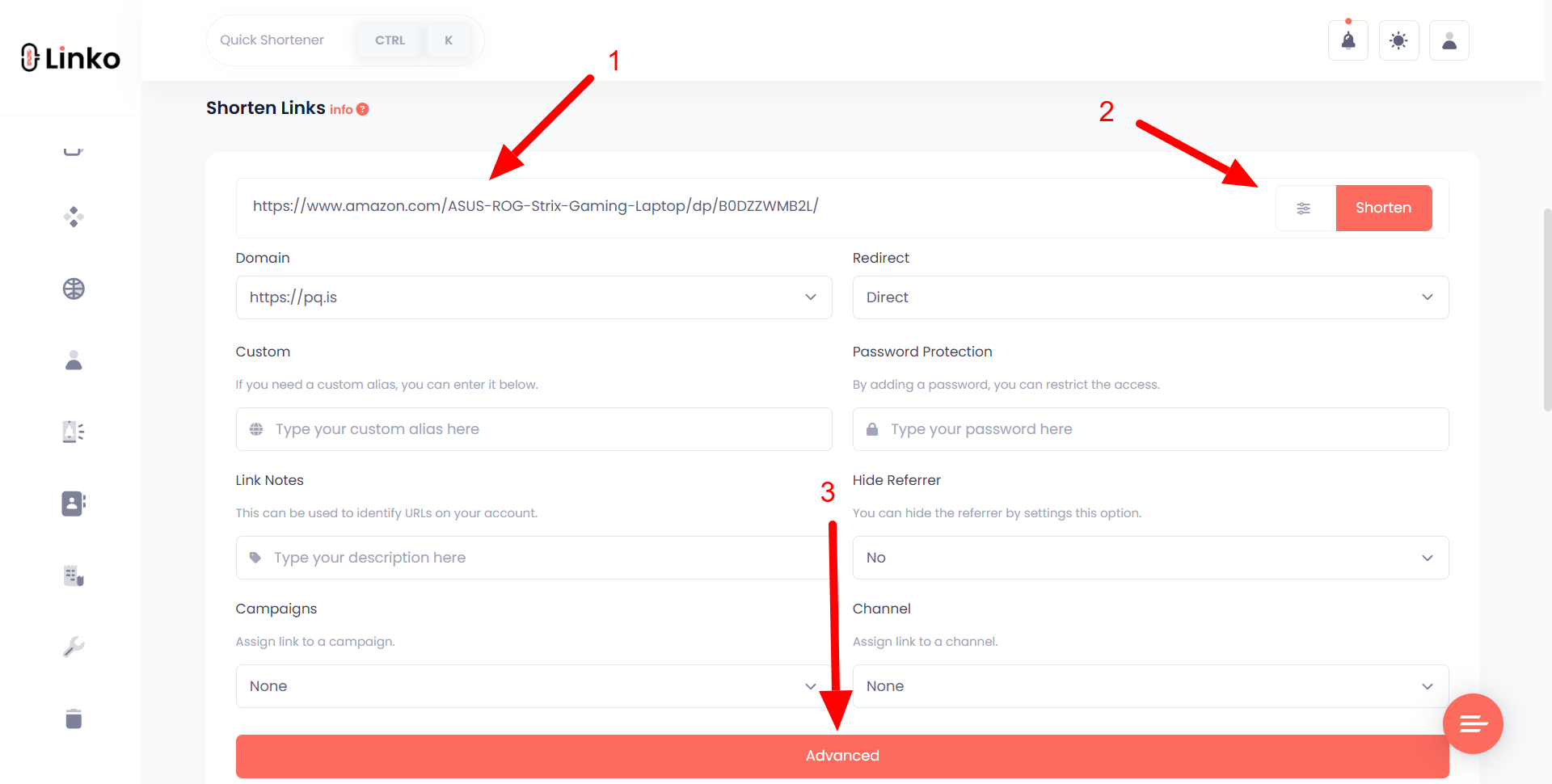
- Open the Deep Linking panel.
- Enable deep linking — Linko will generate iOS and Android deep links.
- Fallbacks for App Store and Google Play are created automatically.
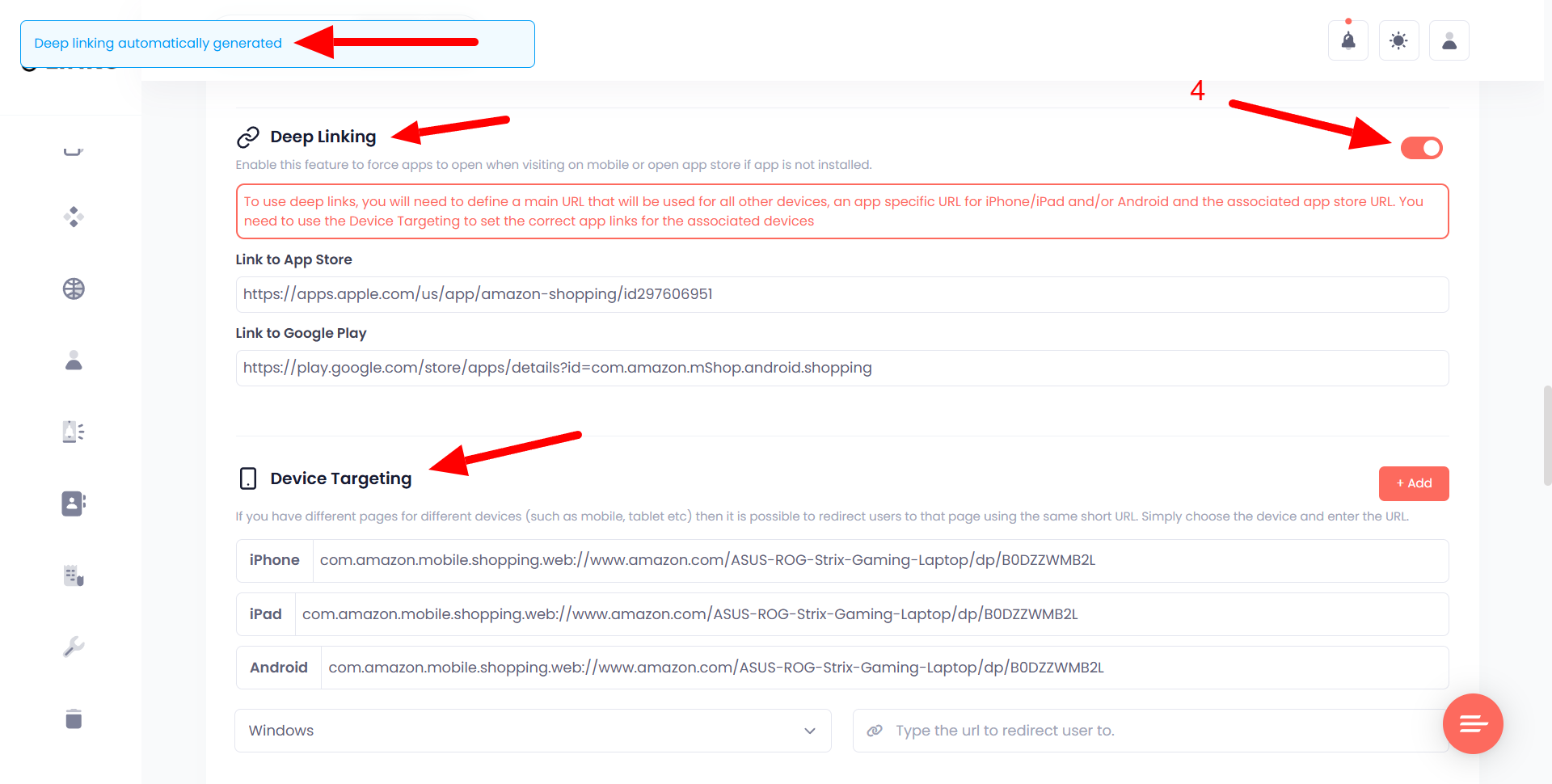
- Click Shorten and copy your ready-to-share link.
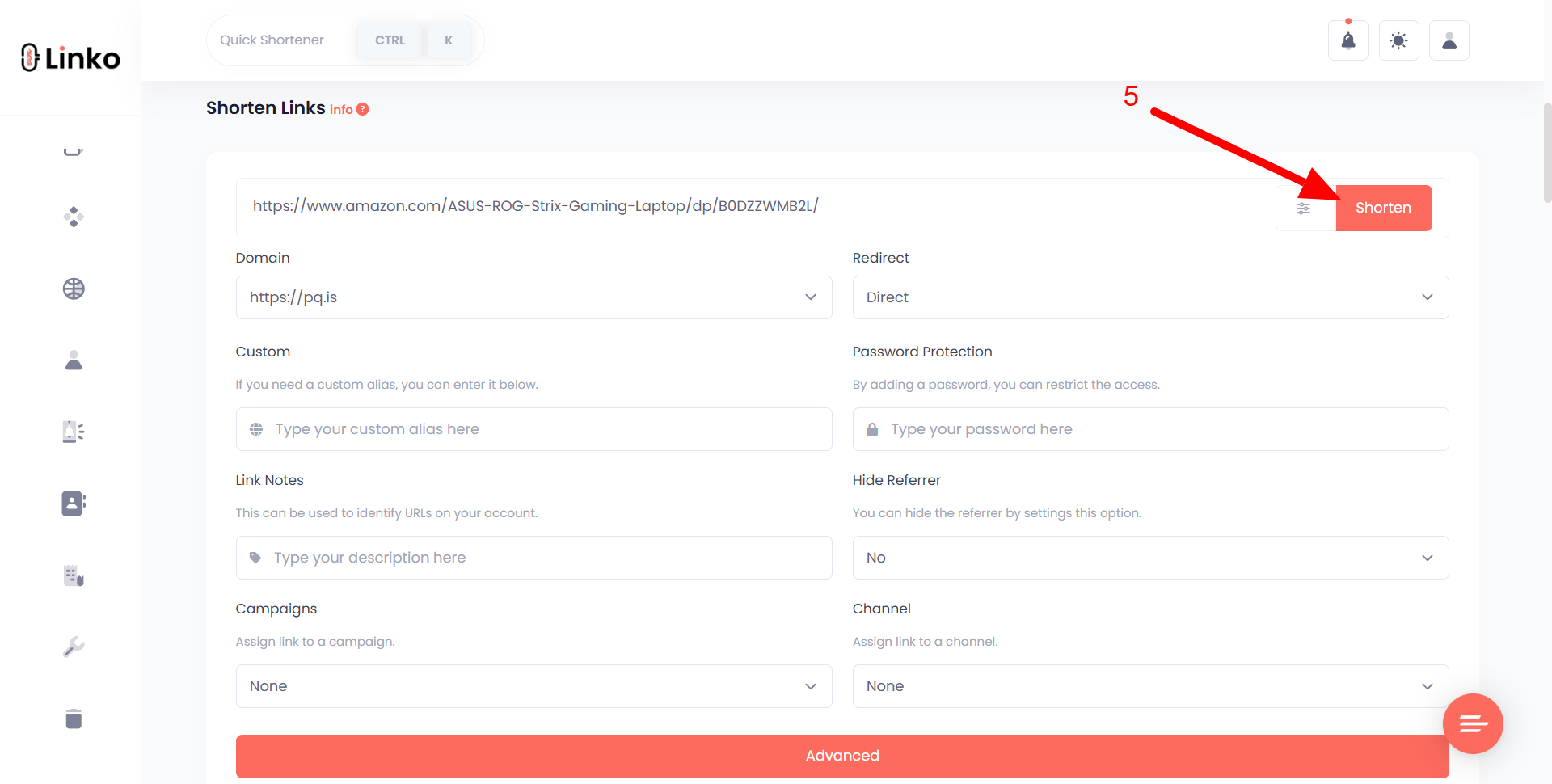
This process ensures your link is optimized for every mobile user, no matter their device.
How do fallback URLs work if the Amazon app is not installed?
Fallback URLs act as a backup when the Amazon app isn’t installed.
Instead of breaking, the link redirects users to either:
- The mobile browser, or
- The Amazon app store page (App Store or Google Play).
That way:
- No clicks are wasted.
- No campaigns break.
- All users still reach Amazon.
Think of it like a safety net: even if the app is missing, your traffic never dies.
What are the benefits of using deep links that open the Amazon app?
The main benefit is higher conversions because people shop more comfortably inside the app.
Deep links also improve tracking, user trust, and campaign performance.
Why it works better in the app:
- Saved addresses and payment methods.
- Personalized recommendations.
- Faster checkout with “Buy Now.”
For marketers, that’s the difference between a click that bounces and a click that converts.
How do deep links improve conversion rates on Amazon campaigns?
Deep links improve conversion rates because they reduce steps in the buying journey.
When a user lands directly inside the app, they can buy instantly without distractions.
Consider this:
- Browser route: Click → Load → Login → Add to Cart → Checkout.
- Deep link route: Click → Product page → Buy Now.
The second path is shorter, faster, and more likely to convert.
That’s why deep links consistently outperform standard Amazon URLs.
Can deep links help affiliates track clicks and sales more accurately?
Yes. Deep links combined with URL shorteners like Linko give affiliates detailed tracking data.
You can measure:
- Total clicks.
- Devices used (iOS vs Android).
- Channel performance (social, email, QR code).
This data isn’t just “nice to have” – it helps you refine campaigns.
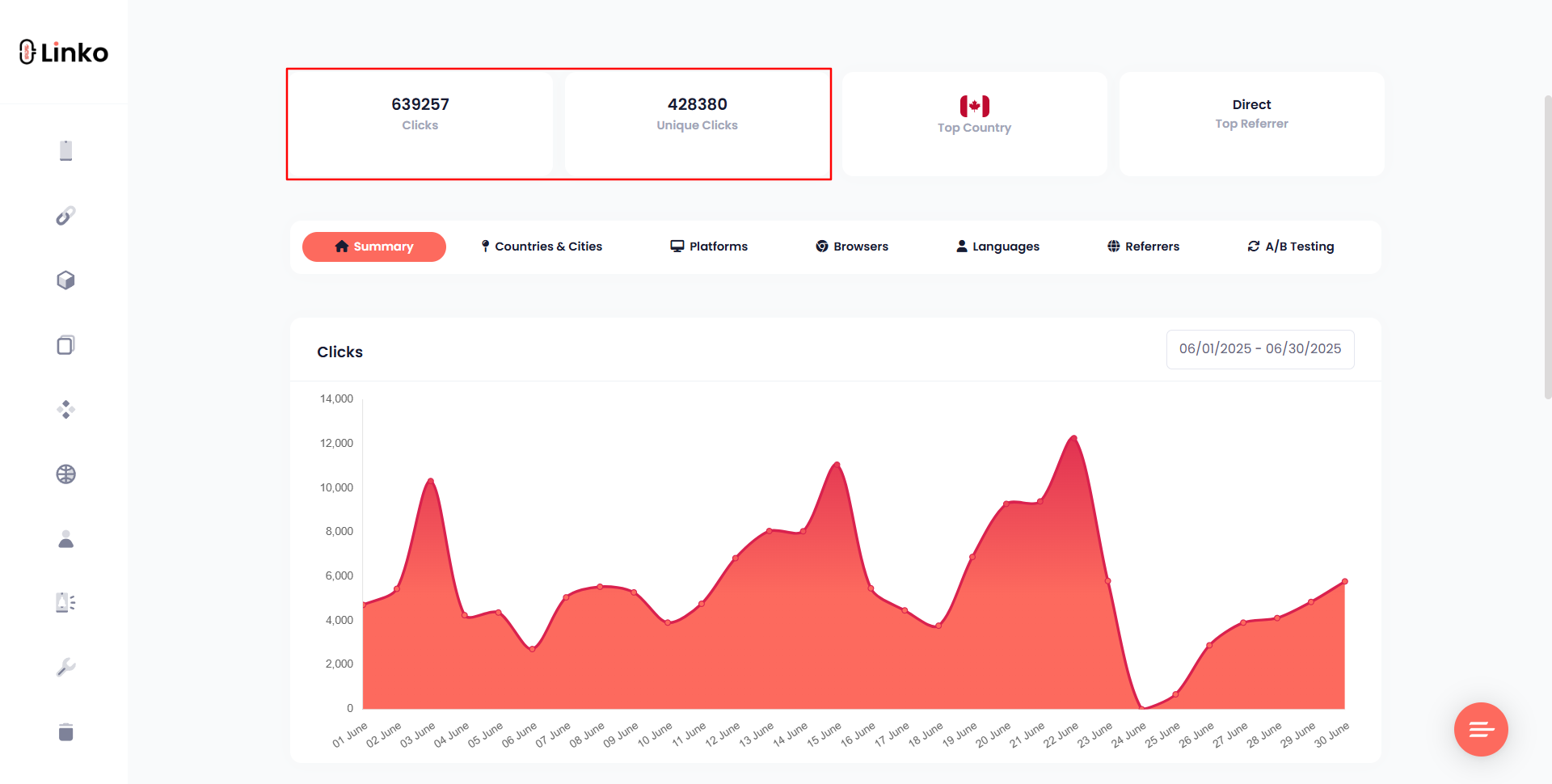
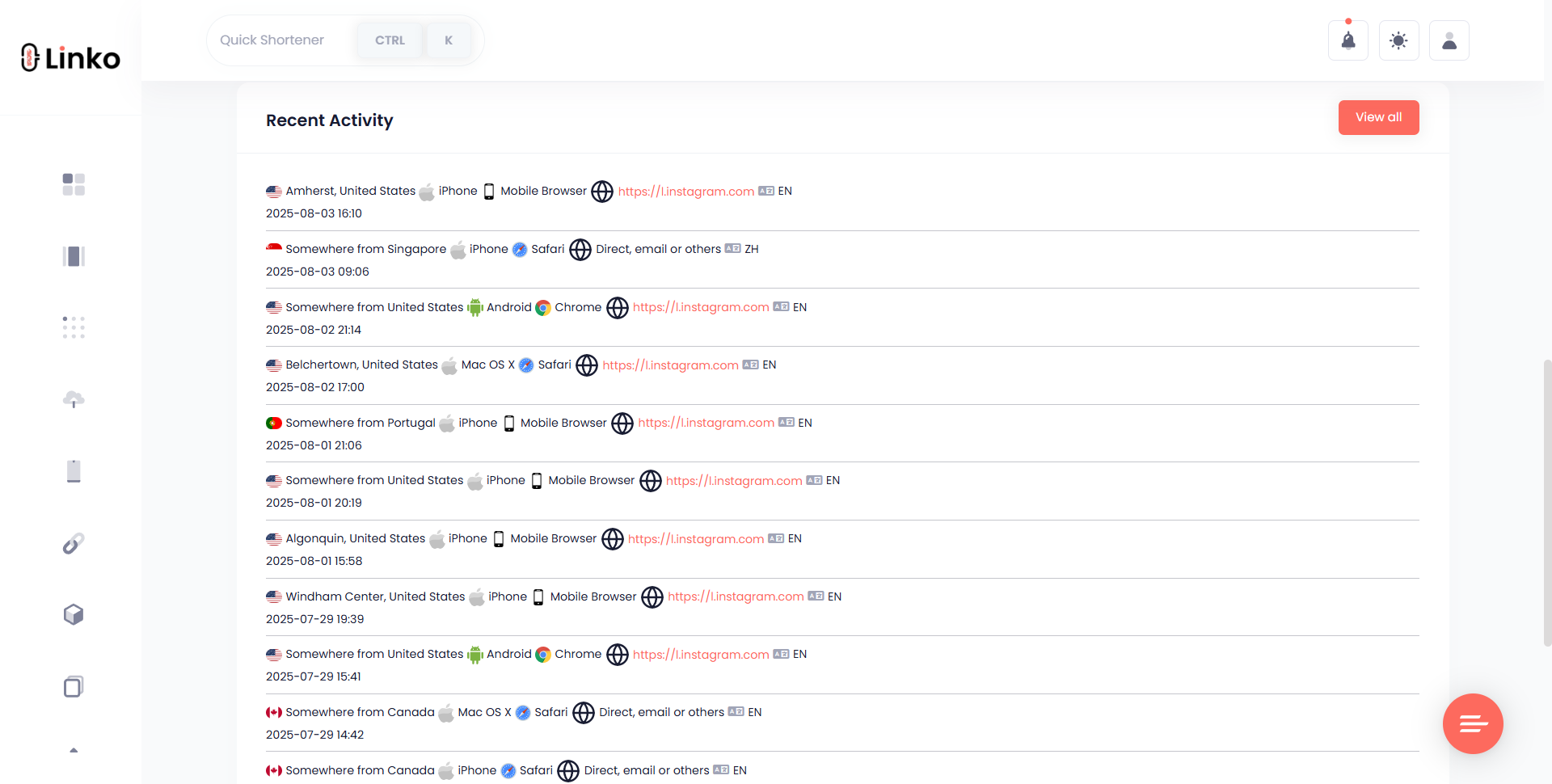
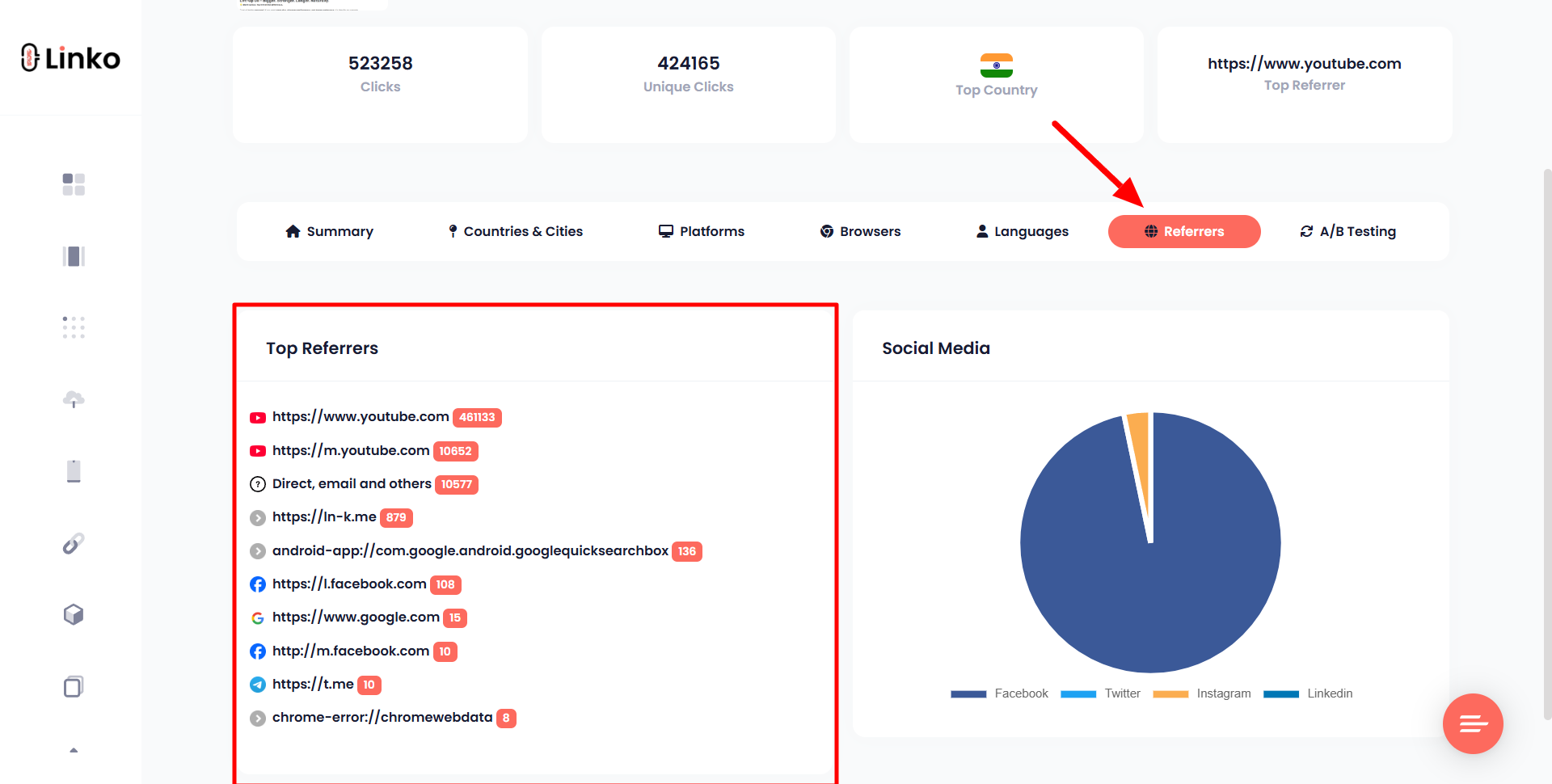
Affiliates can double down on platforms that bring the most conversions and cut out weak ones.
As one Amazon affiliate marketer put it in a Reddit discussion:
“Switching to deep links and shorteners boosted my conversions by 20% because I finally knew which traffic sources worked best.”
How do Amazon app deep links affect mobile shopping behavior?
Amazon deep links strongly influence shopping behavior by making purchases easier and faster inside the app.
They reduce the chances of distractions, increase trust, and keep customers engaged until checkout.
Shoppers today expect smooth, app-first journeys.
By skipping the mobile browser, deep links provide an environment where users already feel comfortable.
Inside the app, saved addresses, one-tap checkout, and personalized recommendations all encourage buyers to complete their purchases instead of bouncing away.
Do users trust deep links more than web-only links?
Yes, users generally trust deep links more because they know the Amazon app is secure and familiar.
A deep link signals continuity, while a plain browser link often feels less reliable.
Customers are often cautious when clicking links, especially from ads or social posts.
When a link immediately opens the Amazon app, trust increases since shoppers recognize the interface.
As one user shared in a product review forum:
“I’m more likely to buy when the link takes me straight to the Amazon app. The browser feels sketchy sometimes, but the app feels like home.”
That “trust factor” is one reason marketers prefer deep links for affiliate promotions.
How do deep links reduce drop-offs during checkout?
Deep links reduce drop-offs because they minimize the number of steps between a click and a completed order.
Every extra login screen or slow-loading page increases the risk of losing the buyer.
Consider these two paths:
- Regular Amazon URL: Click → Browser opens → Log in → Cart → Checkout.
- Deep link: Click → Amazon app opens → Buy Now.
The second journey removes hurdles, which keeps buyers moving forward.
Data from CleverTap suggests that app-based transactions have up to 3x higher conversion rates than web sessions.
How do Amazon deep links perform in different marketing channels?
Amazon deep links work across multiple marketing channels, from social ads to email to QR codes.
They ensure that no matter where a user clicks, they land in the app.
This versatility makes them one of the most useful tools for affiliates, brands, and influencers who run multi-platform campaigns.
Can you use Amazon app deep links in social media ads?
Yes, deep links can be placed in social media ads on platforms like Facebook, Instagram, TikTok, or X (Twitter).
They drive users straight from the ad into the Amazon app.
Social ads often target impulse buyers.
If a user clicks and the browser opens, interest may fade before checkout.
With app deep links, users land directly on the product page, where they can act instantly.
This makes ads more cost-effective because conversion rates increase per click.
How do Amazon deep links work in email and SMS campaigns?
Amazon app links perform very well in email newsletters and SMS promotions because they carry the shopper straight into the app.
This is useful for time-sensitive offers.
For example:
- An affiliate running a “Deal of the Day” email can send readers directly to the product inside the app.
- A retailer sending bulk SMS campaigns can link users to Amazon category pages for seasonal sales.
The faster the path, the more likely users are to act before the deal expires.
Are deep links supported in QR codes for offline promotions?
Yes, Amazon app deep links can be embedded inside QR codes and used on posters, flyers, or product packaging.
When scanned, the QR code opens the Amazon app directly.
This is powerful for offline campaigns like:
- In-store displays that connect customers to online deals.
- Event booths promoting brand storefronts.
- Packaging inserts that encourage repeat orders.
Using a QR code generator like Linko, these QR-based deep links can also be tracked, so marketers know how many scans converted into sales.
What are common problems with Amazon deep links and how to fix them?
While deep links are reliable, issues sometimes occur.
Links may fail to open in the app, or redirection may behave differently across devices.
The good news: most problems can be fixed with simple troubleshooting.
Why do some Amazon links fail to open in the app?
Amazon links sometimes fail because the app is outdated, the user’s device settings block the handoff, or the link wasn’t formatted correctly.
For example, if a deep link was created manually instead of using a tool like Linko, the URI scheme might be missing.
In other cases, the Amazon app may not be installed, leading to fallback redirections.
How can you test and troubleshoot your Amazon deep links?
Testing ensures deep links behave consistently across platforms.
You can troubleshoot by:
- Checking the link on both iOS and Android.
- Making sure the Amazon app is updated.
- Using a link shortener with built-in deep linking, like Linko.
- Verifying that fallbacks redirect to the correct store or mobile site.
Pro tip: Always test your links in incognito mode to see how they behave for new users who aren’t logged in.
How do Amazon deep links compare with other e-commerce deep links?
Amazon isn’t the only platform using deep links.
Walmart, eBay, and Shopify-based stores all support similar technology.
However, each has its quirks.
Understanding the differences helps marketers create better cross-platform campaigns.
Are Amazon app links different from Walmart or eBay deep links?
Yes, each platform uses its own URI scheme, which affects how links behave.
Amazon app links often feel smoother because of the app’s massive user base and better optimization.
For instance:
- Amazon: Prioritizes product and category deep links.
- Walmart: Focuses more on category, brand, product, and search based links.
- eBay: Often requires login before showing item details.
Here’s a quick comparison table:
| Platform | App Link Behavior | Strong Point |
|---|---|---|
| Amazon | Direct product/category page | High conversions |
| Walmart | Links to category, brand, product, and search | Higher CTR |
| eBay | Opens listings, requires login | Auction model |
How does deep linking help across multiple shopping platforms?
Deep linking helps because it keeps buyers in their preferred shopping environment, no matter the retailer.
On Amazon, eBay, or Walmart, app-first journeys lead to fewer drop-offs.
For affiliates promoting multiple marketplaces, deep links ensure each link works “app-first,” giving every campaign a better shot at conversions.
Using a tool like Linko makes it easier to manage deep links for different platforms without juggling separate systems.
How can affiliates and influencers use Amazon deep links to grow revenue?
Affiliates and influencers can grow revenue by embedding Amazon app deep links in every promotion.
These links make the buying process smoother and easier to track.
Whether it’s in YouTube descriptions, Instagram bios, or TikTok captions, deep links improve the chance that a viewer will actually buy.
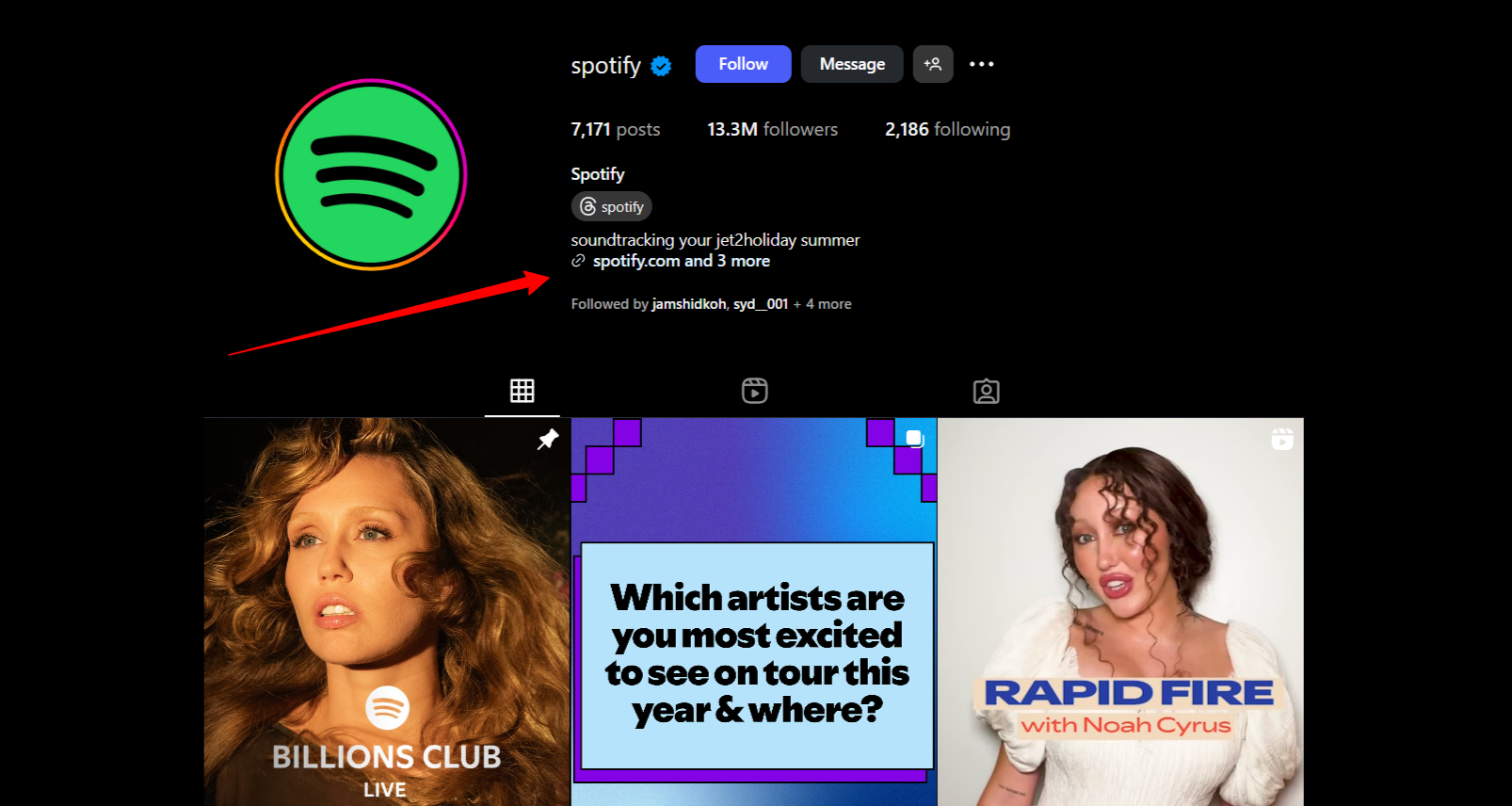
How do deep links make affiliate promotions more seamless?
Deep links make affiliate promotions seamless by dropping customers right at the purchase point.
Instead of losing interest during browser logins, shoppers buy quickly inside the app.
An affiliate running a “Top 5 Tech Gadgets” blog can include deep links for each item.
Readers who click won’t bounce around between browser tabs, they’ll land directly in the Amazon app with the product ready to buy.
Can influencers track campaign performance with shortened deep links?
Yes, shortened Amazon deep links give influencers powerful analytics.
By using Linko, they can measure:
- Which platforms drive the most sales.
- Which regions perform better.
- Which products convert higher.
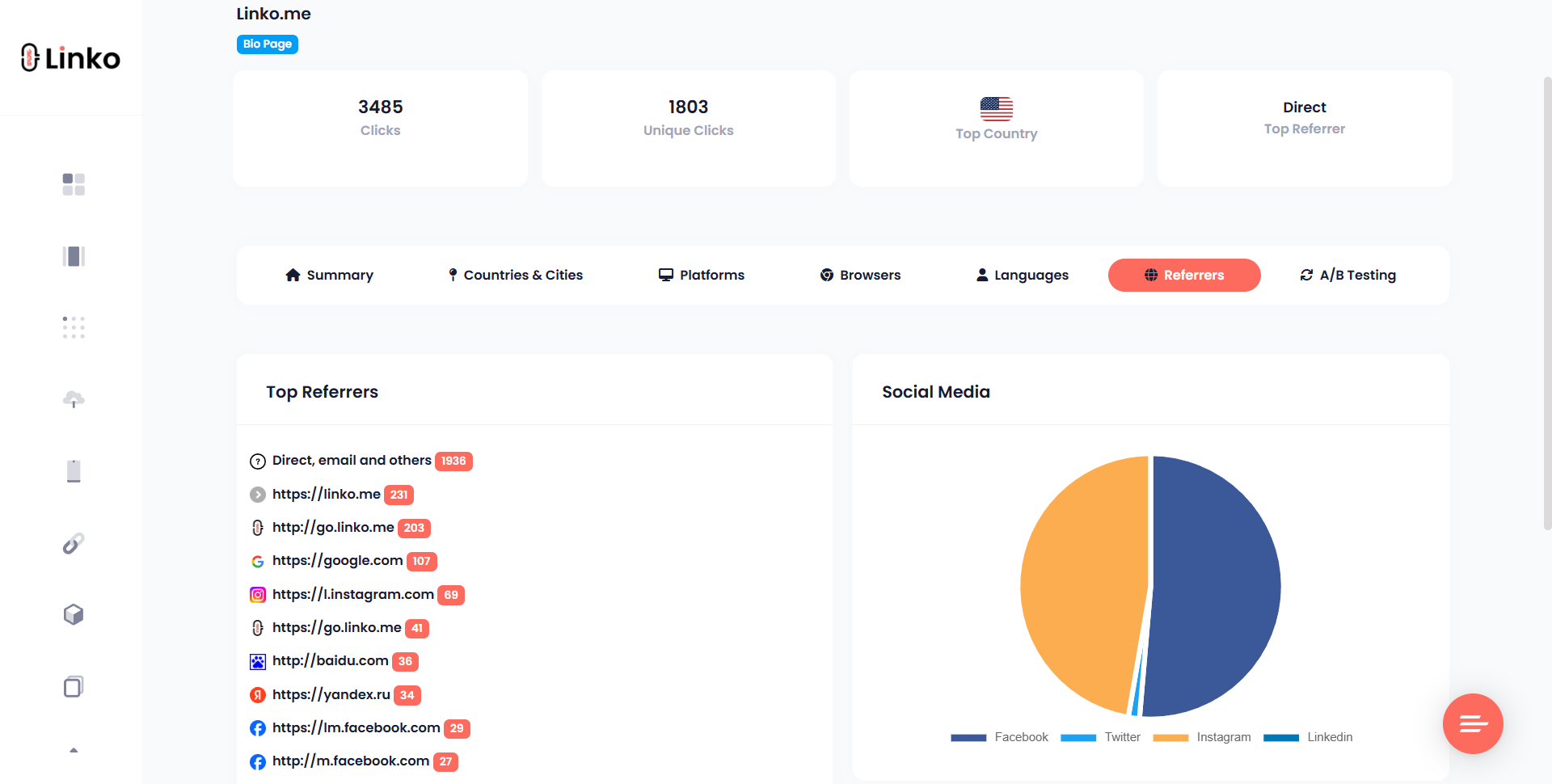
This level of clarity helps influencers focus on the most profitable strategies.
Final thoughts
Amazon deep linking is no longer optional, it’s the standard for mobile-first shopping campaigns.
By sending users directly into the app, affiliates, influencers, and brands can boost conversions, improve trust, and gain better tracking insights.
With tools like Linko, creating deep links is simple and scalable.
Whether you’re running ads, sending emails, or adding QR codes to packaging, deep links ensure every click counts.
FAQs
Can I create an Amazon deep link without special tools?
Yes, but it’s complex. Tools like Linko automate the process and ensure fallbacks work correctly across iOS and Android.
Do Amazon deep links work for international marketplaces?
Yes, but links should match the correct Amazon domain (.com, .in, .de, etc.). Linko can help manage geo-specific redirects.
Will deep links work if the user doesn’t have the Amazon app?
Yes. In that case, the link falls back to the browser or app store so the shopper can still reach Amazon.
Can I use Amazon deep links in Google Ads or Facebook Ads?
Yes, but always test them first. Some ad platforms add tracking layers that can affect behavior.
Do deep links affect my Amazon Associates commission?
No, commissions are preserved as long as your affiliate tag is included in the link. Deep linking just improves the user journey.

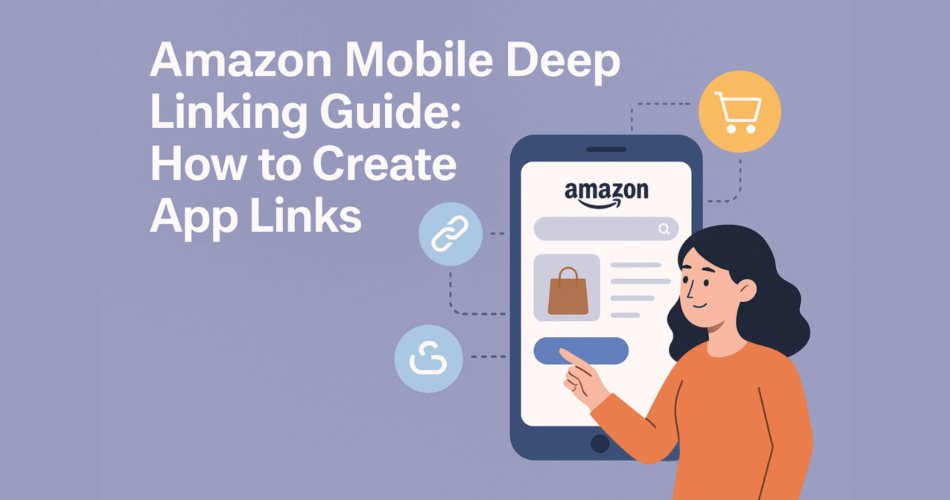
Comments